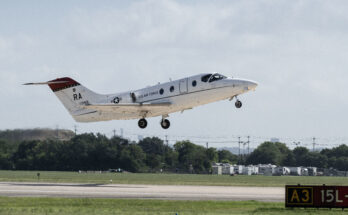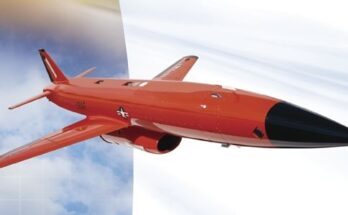
A Center for a New American Security (CNAS) report released last month argues the U.S. must strengthen its investments and align strategic planning for precision-guided munitions (PGMs) to meet the goals of the 2022 National Defense Strategy (NDS). Researchers Stacie Pettyjohn and Hannah Dennis point to the worrying intersection between missile gaps in a potential Indo-Pacific conflict, the “acute threat” of Russian aggression, the impact of Ukraine munitions aid on the U.S. arsenal, and the health of the American industrial base. While the FY23 and FY24 budget requests showed a necessary and encouraging pivot toward prioritizing anti-ship and long range PGMs, the CNAS researchers conclude this trend must continue, stating industrial capabilities will “make or break” DOD planning to address shortfalls.
Impact of Ukraine
The ongoing Russo-Ukrainian War continues to prove that sustained armed conflict requires the expenditure of massive numbers of munitions and the capacity to replenish related stores. Western allies and NATO partner nations sending weapons to Ukraine quickly realized vulnerabilities in their industrial bases. A March 2023 British parliamentary defense committee report stated it would take 10 years, at current rebuild speed, for the Ministry of Defense to achieve acceptable levels after supplying Ukraine with weapons.
From January 2022 to February 2023, of the $46.6 billion in military aid the U.S. sent to Ukraine, $23.5 billion, or 31 percent of the total, comprised weapons and equipment drawn from DOD stockpiles. Specific numbers of PGMs sent are difficult to ascertain; however, a June Congressional Research Service report showed “4000+ Tube-Launched, Optically-Tracked, WireGuided (TOW) missiles, high-speed anti-radiation missiles (HARMs), and laser-guided rocket systems” have been supplied to Ukraine.
The U.S. faces similar production dilemmas as Europe. The CNAS report states the American defense industrial base’s inability to manufacture enough weapons is partly to blame for Ukraine’s pursuit of “workarounds and alternate weapons.” Moreover, PGMs require a more sophisticated and demanding manufacturing process than unguided munitions, further taxing production rates. The study’s authors note 24 percent of the FY23 conventional PGM budget addressed contracts meant to replace stockpiles sent to Ukraine. They argue the core of PGM funding should aim at investments related to the Chinese strategic threat.
NDS Threats
The Biden administration’s unclassified 2022 NDS identifies China as a “pacing challenge” for the U.S. and a destabilizing aggressor in the Taiwan Strait and Indo-Pacific region. Attributive to its territorial invasion of Ukraine, the NDS labels Russia as an “acute threat.” Pettyjohn and Dennis argue the Pentagon should invest heavily in standoff weapons to counter the threat of potential sustained combat operations in the Indo-Pacific. They believe Chinese missile defense systems will effectively down first-strike long-range U.S. missiles necessitating a large inventory to offset initial losses.
CNAS suggests the DOD historically underinvested in anti-ship missiles even after shifting focus to a growing Chinese threat. Defending a Taiwan invasion will require large numbers of maritime strike weapons and layered defense missiles, including air-to-air and ground-based weapons. Given the challenge of funding the supply of PGMs to Ukraine to address Russia’s threat to the region while building an arsenal tailored to a potential threat in Taiwan, the authors say success lies with the industrial base’s capacity.
Defense Industrial Base
Concerns about the American defense industry long preceded the war in Ukraine. Researchers have sounded this alarm for decades; the Pentagon’s attention shift from Global War on Terror operations to great power competition has only heightened the stakes. An extensive Center for Strategic & International Studies (CSIS) report led by Mark Cancian published in 2021 addressed these issues in sobering detail. Prior to American inventories depleting toward the Ukrainian war effort, researchers found the industrial base had become more “brittle” over the previous 20 years and would continue along that trendline. Even at surge production rates, CSIS forecast it would take many years to replace weapons stockpiles in the event of a long-term conflict.
The same study concluded historical case studies of WWI and WWII industrial base mobilization serve as critical warnings. CSIS researchers wrote that the American defense base did not reach an effective production level until the end of WWI. Further, the strategic industrial prowess experienced during WWII was due to shared combat contributions by allies and a mobilizing effort that began years before the U.S. entered the war.
By nature, the relationship between the DOD and defense companies presents difficulties in maintaining a continuously robust and diverse arsenal. Long-term contracts to feed ongoing production lines for munitions like PGMs that require technological labor expertise and advanced components are hard to secure politically and financially.
The conflict in Ukraine and multiple-theater threats only exacerbates the challenges faced by the U.S. industrial base and the Pentagon concerning weapons planning. The CNAS report shows the need for a diverse inventory of PGMs and weapons as munitions requested by Ukraine differ from the strategic and tactical weapons necessary to address threats posed by China. The Pentagon has fortunately refocused munitions spending considering these competing priorities. However, long lead times and delays for production line startups complicate the matter. Success of the strategic aims outlined in the 2022 NDS relies on the DOD’s continued application of munitions budget requests to these goals and, primarily, the restoration of the historically hampered defense industrial base.
A former naval officer and helicopter pilot, Jon covers a range of Forecast International reports and products, drawing on his 10-year background in military aviation, operations, and education. His previous military assignments include multiple overseas deployments supporting operations in the Arabian Gulf, NATO exercises, and humanitarian missions. Jon’s work is also influenced by his time as a former Presidential Management Fellow and international trade specialist at the Department of Commerce.
Before joining Forecast International, Jon also served as an NROTC instructor and Adjunct Assistant Professor at the University of Texas, where he taught undergraduate courses on naval history, navigation, defense organization, and naval operations and warfare. A lifelong reader and learner, his academic and professional interests include aviation, political and military history, national defense and security, and foreign area studies.




